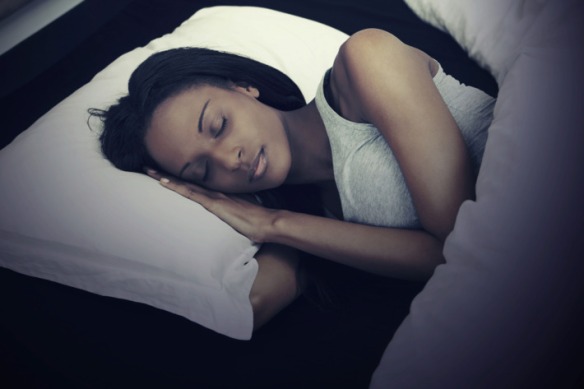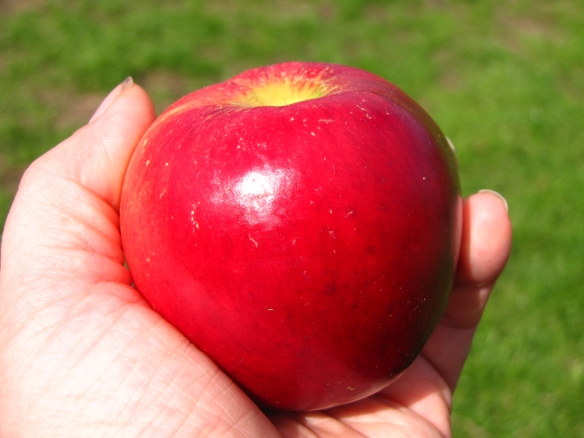If you struggle to fall asleep at night, you are not alone. As many as 60 million Americans suffer from insomnia — and that number is growing every year.
According to Ayurveda, insomnia is most commonly caused by a disturbance in Vata dosha. Vata dosha is the principle concerned with movement in the body. When Vata is out of balance, your mind can be racing and your body can be so keyed up at bedtime that you are not able to fall asleep.
People with Vata disorders tend to keep irregular habits, including eating at different times of the day and going to bed at all hours — habits that can cause Vata dosha to become even more imbalanced.
Being out of tune with nature’s daily rhythms may actually be causing insomnia in millions around the world. With the invention of the electric light bulb, it suddenly became possible for many activities to take place after sunset. To re-attune yourself with nature’s rhythms, try going to bed at the same time every night, preferably with a bedtime of 10:00 or earlier.
According to Ayurveda, the many rhythms and cycles of the cosmos (such as the circadian rhythm, caused by the earth rotating on its axis every 24 hours, or the seasonal cycle of the earth revolving around the sun) have a counterpart in the human body.
Modern science is beginning to study this phenomenon. Research shows that many neurological and endocrine functions follow the 24-hour cycle. Our sleep-wakefulness cycle is one of those circadian rhythms. Science now knows that many of the hormones your body needs to repair itself are released while you sleep. Science tells us that between 10 p.m. – 2 a.m. the deepest and most regenerative sleep occurs. Remember that time: you’ll hear about it later.
Ayurveda has identified three “master cycles” that occur in your mind/body system — and in nature around us. You experience them in terms of the three doshas: Vata, Pitta, and Kapha.
Kapha cycle in the evening takes place from 6:00 p.m. to 10:00 p.m., after work is finished and the sun is setting. You naturally feel more relaxed and drowsy at this time, since your body is preparing to sleep. This is the influence of Kapha dosha, which by nature is slow and heavy.
If you go to bed during this Kapha cycle, before 10:00 p.m., sleep will come more easily and will have more of the slow, stable quality of Kapha dosha.

Modern research concurs that sleep gets lighter and lighter as dawn approaches. Our deepest slumber (called NREM sleep) occurs within 20 minutes of falling asleep and gets interrupted around 90 minutes later by a five-to-ten minute round of REM-type sleep. For the rest of the night, you alternate between the two types of sleep in 90-minute cycles, with your NREM sleep getting shorter and less deep and the lighter REM cycles getting longer.
Because so many people suffer from an aggravation of Vata, it can be difficult to stop activity and head to bed early. If you go to bed after 10:00 p.m., you are going to bed during the Pitta cycle, between 10:00 p.m. and 2:00 a.m. Pitta is the principle that governs transformations. At noon, when we are also in a Pitta cycle, the increased principle of transformation helps us to digest our lunch (which Ayurveda recommends should be our biggest meal of the day). In the evening the transformative properties of Pitta are meant be used to help repair the body while we sleep, so that we awake refreshed and renewed. If we are awake during this time, many experience a spurt of intellectual activity and find that this is the “perfect” time to catch up on work or personal projects. This is a misuse of the Pitta cycle and we are robbing our body of its chance to repair and restore itself. Once the mind becomes active during the Pitta cycle, it is difficult to turn off thoughts. Combined with a Vata imbalance, which can “fan the fires” of Pitta, you could easily find yourself up until the wee hours of the morning — and enjoying a midnight snack to boot.
What happens when we rob ourselves of our nightly self-repair? Science is finding a wide range of negative effects, from being more susceptible to colds and infections to increasing the risk of Alzheimer’s. Deep sleep apparently allows us to deep clean plaque from the brain.
While there are many other aspects of insomnia to consider, the first step anyone who is serious about conquering insomnia should consider is to create a regular schedule which includes being in bed before 10:00 at night.
A visit to an Ayurvedic expert will help you to more precisely pinpoint which imbalances are keeping you from a good night’s sleep. They can prescribe diet, supplements and lifestyle changes that will support your efforts.
For more information on programs for insomnia, visit The Raj Ayurveda Health Spa website:










